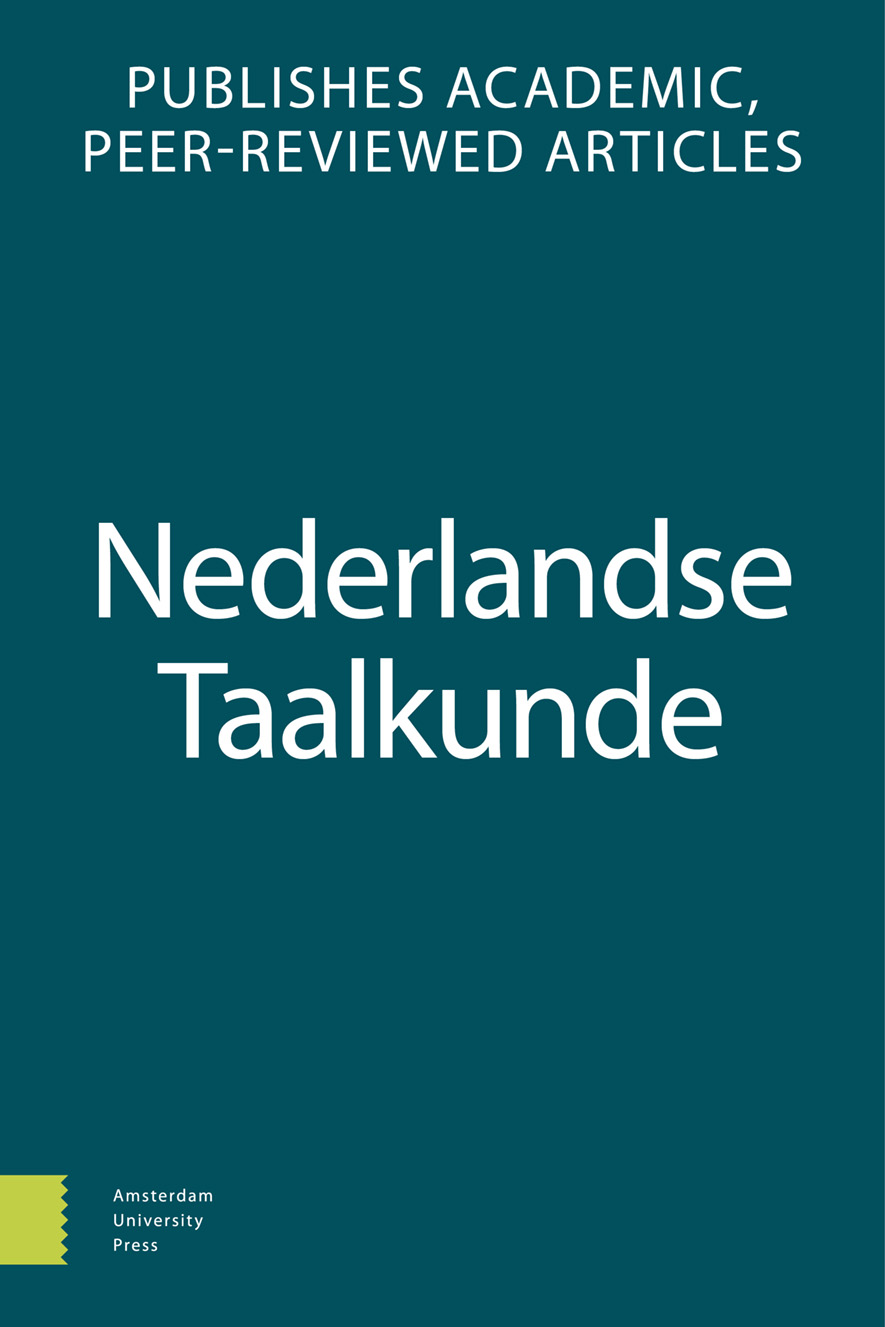- Home
- A-Z Publications
- Nederlandse Taalkunde
- Previous Issues
- Volume 28, Issue 3, 2023
Nederlandse Taalkunde - Volume 28, Issue 3, 2023
Volume 28, Issue 3, 2023
Language:
Dutch
- Artikelen
-
-
-
Spelen met verwachtingen
More LessAuthors: Feike Dietz, Marjo van Koppen & Mees van ZantenAbstract The lively research into changing negation patterns focuses mostly on the patterns found between authors. It rarely offers any insight into the individual language user who uses one- and two-part negations interchangeably in everyday communication, or in literary products. To fill this gap, this article focuses on the negation variation of the individual seventeenth-century language user Michiel de Ruyter (16 Read More
-
-
-
-
Zullen en willen
More LessAuthors: Jan Nuyts, Wim Caers & Henri-Joseph GoelenAbstract This paper offers a corpus-based investigation of the diachronic evolution of the Dutch modal verbs zullen ‘shall/will’ and willen ‘want’. Although they show considerable differences in their developments, neither of these verbs participates in the marked tendency to regain grammatical autonomy characterizing the ‘central’ modals kunnen ‘can’, mogen ‘may’, moeten ‘must’ and hoeven ‘need’. While the latt Read More
-
-
-
De paucalis in het Nederlands en de structuur van de grammatica
More LessAbstract In general linguistics, a paucal is a specific construction that only allows for insertion of the lowest numerals (num), e.g. the Russian num + N.gen.sg, which only allows the numerals 2-4 (Pesetsky 2009). In this paper it is argued that also Dutch shows paucal effects in at least three constructions with numerals: (i) the alle + num + de + N construction, (ii) the num + diminutive construction, and (iii) the historical num Read More
-
-
-
Een pracht van een constructie vs. een prachtconstructie
More LessAbstract This paper aims to revisit the Dutch Binominal Expressive Construction (cf. een schat van een kind) through an extensive corpus study and to explore its comparability with a potential morphological counterpart in the form of a [N1 N2]N2 compound. We focus on four positively-connotated N1s, namely schat ‘treasure’, droom ‘dream’, pracht ‘splendor, beauty’ and wonder ‘miracle’, three of which occur in both t Read More
-
- Squib
-
-
-
Oblieke subjecten in het Nederlands?
More LessBy Joren SomersAbstract In this paper, I argue that the oblique argument of the Dutch two-place predicate wachten ‘wait’ behaves syntactically, semantically, and pragmatically as a subject. Conversely, its morphological subject behaves as an object. The starting point of this study is an instance of conjunction reduction in the Flemish newspaper De Standaard, in which the oblique argument of wachten is left unexpressed on ide Read More
-
-
- Boekbesprekingen
-
Most Read This Month
Article
content/journals/13845845
Journal
10
5
false
en

Most Cited Most Cited RSS feed
-
-
oa Goed of fout
Authors: Hans Bennis & Frans Hinskens
-
- More Less

